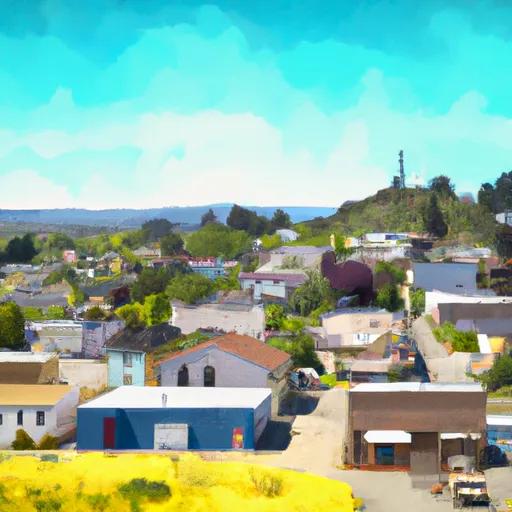-
 Snoflo Premium
Snoflo Premium
Get unlimited access to all our content
With no Ad interruptions! - Start Your Free Trial Login with existing account
Stevinson
Eden Index
Climate
9.0
•
Recreation
2.8
•
Community
0.8
•
Safeguard
4.8/10

Stevinson, California is a small unincorporated community located in Merced County, in the heart of the Central Valley. The region is characterized by a Mediterranean climate with hot, dry summers and mild, wet winters. Summers in Stevinson can be scorching, with temperatures often exceeding 100°F, while winters are relatively mild, with average temperatures ranging from the high 30s to low 60s°F.
The area's hydrology is primarily influenced by the nearby San Joaquin River, which provides much-needed water for agricultural activities in the surrounding farmlands. The region also relies on irrigation and groundwater sources to sustain the local agriculture industry.
For outdoor enthusiasts, Stevinson offers various recreational opportunities. The nearby San Luis National Wildlife Refuge is a popular destination for birdwatching, with a diverse range of migratory and resident bird species. The refuge also boasts trails and observation points for visitors to explore and enjoy the natural surroundings.
In addition to the wildlife refuge, the nearby San Luis Reservoir State Recreation Area provides opportunities for boating, fishing, camping, and hiking. Visitors can enjoy water sports, picnic by the lake, or explore the surrounding trails, making it a great destination for outdoor recreation enthusiasts.
What is the Eden Index?
The Snoflo Eden Index serves as a comprehensive rating system for regions, evaluating their desirability through a holistic assessment of climate health, outdoor recreation opportunities, and natural disaster risk, acknowledging the profound impact of these factors on livability and well-being.
Climate Health Indicator (CHI): 9.0
Stevinson receives approximately
310mm of rain per year,
with humidity levels near 60%
and air temperatures averaging around
17°C.
Stevinson has a plant hardyness factor of
9, meaning
plants and agriculture in this region tend to thrive here all year round.
By considering the ideal temperature range, reliable water supplies, clean air, and stable seasonal rain or snowpacks, the Climate Health Indicator (CHI) underscores the significance of a healthy climate as the foundation for quality living.
A healthy climate is paramount for ensuring a high quality of life and livability in a region, fostering both physical well-being and environmental harmony. This can be characterized by ideal temperatures, reliable access to water supplies, clean air, and consistent seasonal rain or snowpacks.
Weather Forecast
Streamflow Conditions
San Joaquin
Area Rivers
San Joaquin
Snowpack Depths
San Joaquin
Reservoir Storage Capacity
San Joaquin
Groundwater Levels
Recreational Opportunity Index (ROI): 2.8
The Recreational Opportunity Index (ROI) recognizes the value of outdoor recreational options, such as parks, hiking trails, camping sites, and fishing spots, while acknowledging that climate plays a pivotal role in ensuring the comfort and consistency of these experiences.
Access to outdoor recreational opportunities, encompassing activities such as parks, hiking, camping, and fishing, is crucial for overall well-being, and the climate plays a pivotal role in enabling and enhancing these experiences, ensuring that individuals can engage in nature-based activities comfortably and consistently.
Camping Areas
| Campground | Campsites | Reservations | Toilets | Showers | Elevation |
|---|---|---|---|---|---|
| Los Banos Creek - San Luis Reservoir | 15 | 379 ft | |||
| McConnell State Rec Area | 21 | 122 ft | |||
| Basalt State Rec Area - San Luis Reservoir | 79 | 563 ft | |||
| George Hatfield State Rec Area | 15 | 68 ft | |||
| San Luis Creek - San Luis Reservoir | 53 | 268 ft | |||
| Medeiros State Rec Area - San Luis Reservoir | None | 236 ft |
Nearby Fishing
Nearby Ski Areas
Catastrophe Safeguard Index (CSI):
The Catastrophe Safeguard Index (CSI) recognizes that natural disaster risk, encompassing floods, fires, hurricanes, and tornadoes, can drastically affect safety and the overall appeal of an area.
The level of natural disaster risk in a region significantly affects safety and the overall livability, with climate change amplifying these risks by potentially increasing the frequency and intensity of events like floods, fires, hurricanes, and tornadoes, thereby posing substantial challenges to community resilience and well-being.
Community Resilience Indicator (CRI): 0.8
The Community Resilience Indicator (CRI) recognizes that education, healthcare, and socioeconomics are crucial to the well-being of a region. The CRI acknowledges the profound impact of these elements on residents' overall quality of life. By evaluating educational resources, healthcare accessibility, and economic inclusivity, the index captures the essential aspects that contribute to a thriving community, fostering resident satisfaction, equity, and social cohesion.

